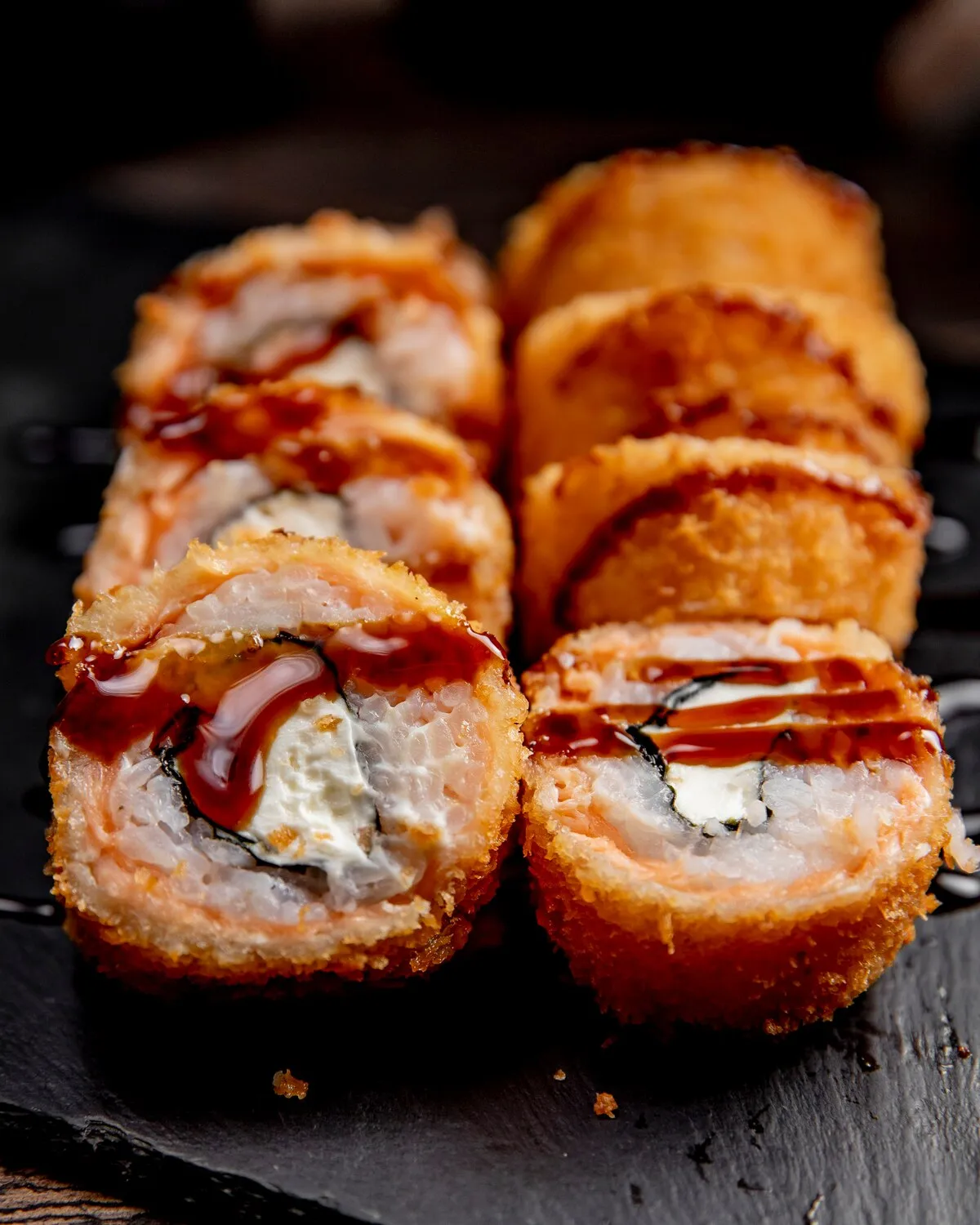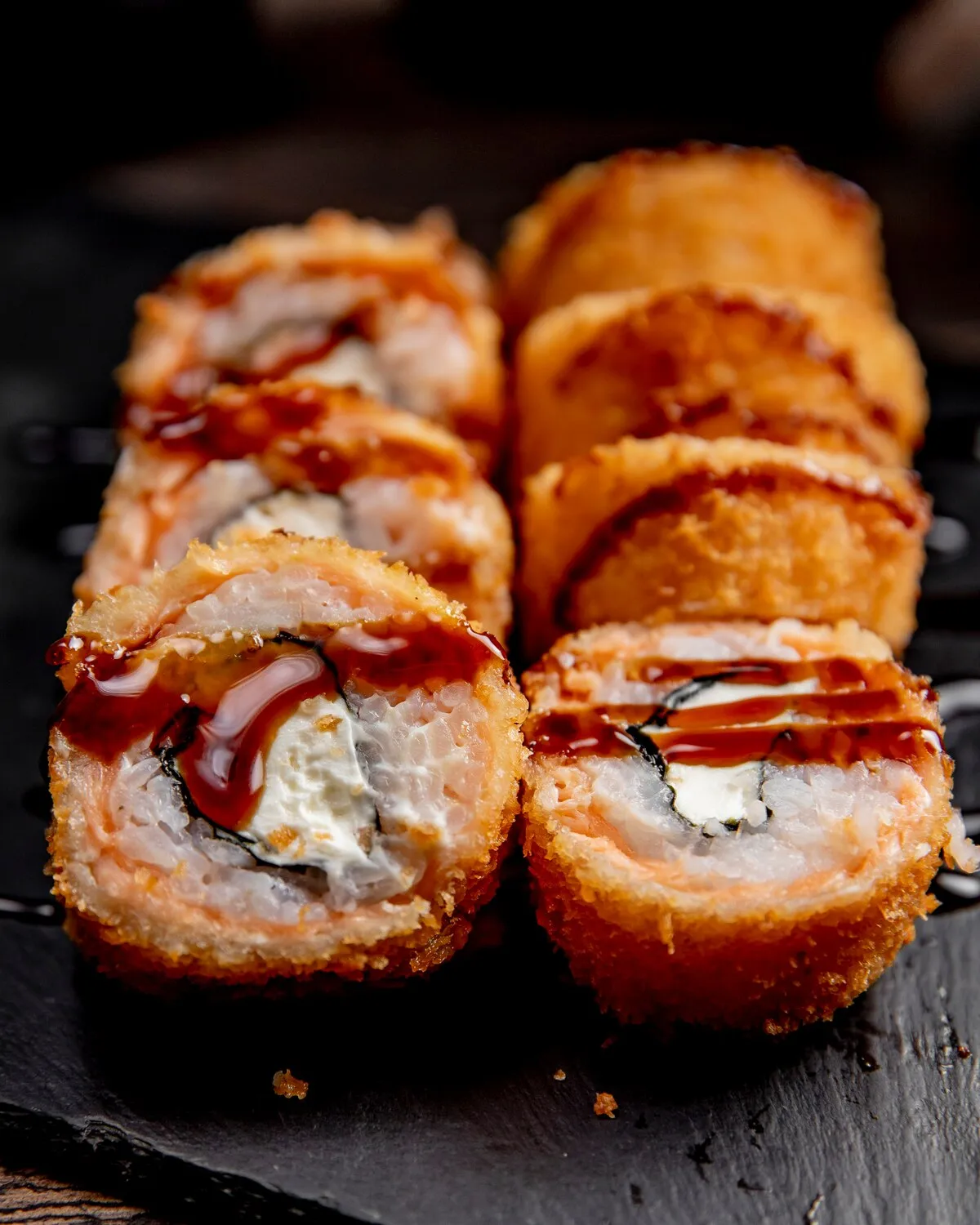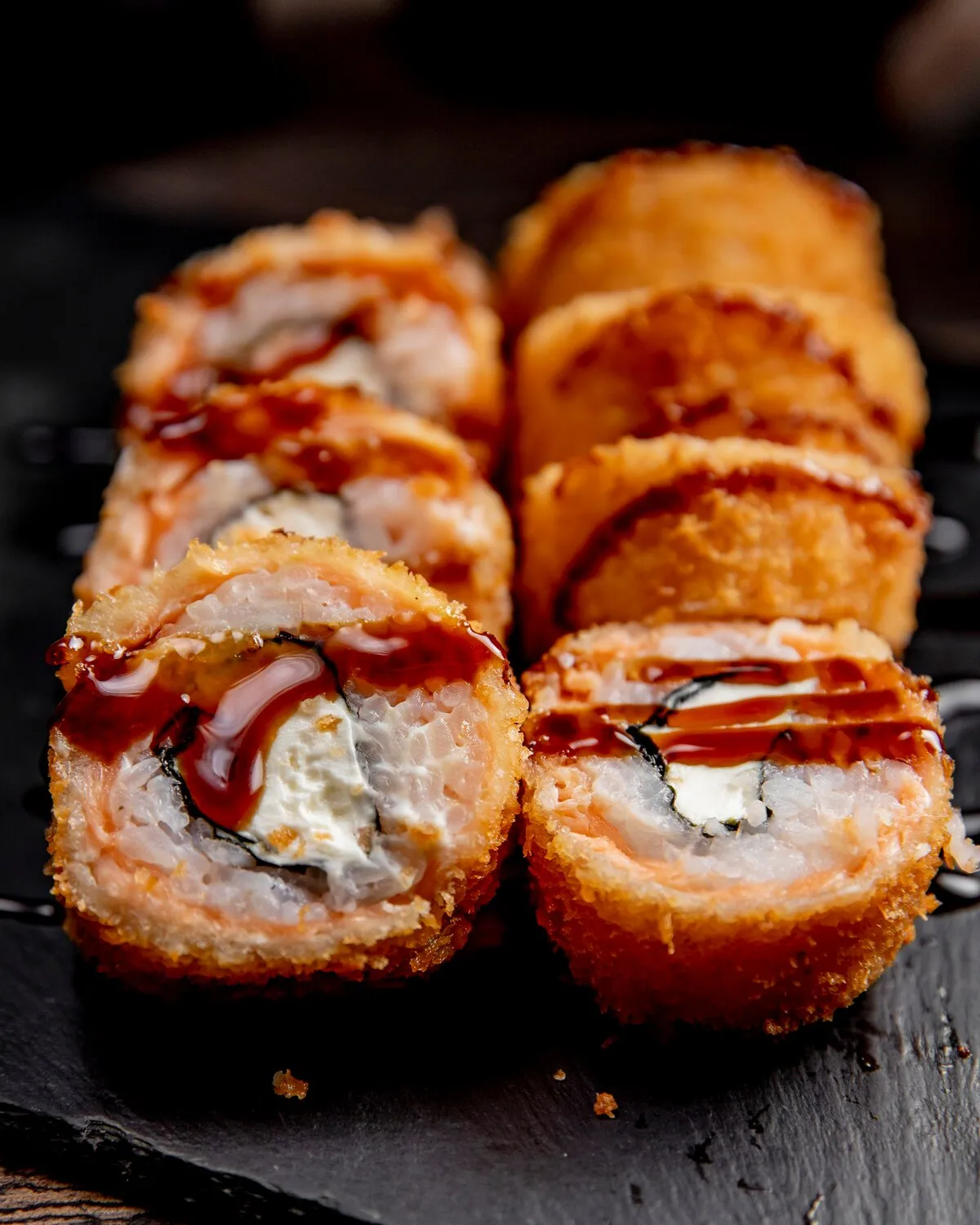
Hot Roll
Fried sushi rolls with various fillings.
Nutrition Facts
* The % Daily Value (DV) tells you how much a nutrient in a serving of food contributes to a daily diet. 2,000 calories a day is used for general nutrition advice.
S.A Casa do Sushi
While sushi originated in Japan, the Hot Roll is a distinctly American invention, born from the fusion of Japanese culinary techniques with American preferences. Its history is relatively recent, emerging in the late 20th century as sushi gained popularity in the US and chefs began experimenting with different preparations to appeal to a wider audience.
Hot Rolls represent the Americanization of sushi, adapting a traditional Japanese dish to suit American tastes and preferences. They are a popular item in American sushi restaurants and are often seen as a gateway for those unfamiliar with raw fish.
Fusion Cuisine
Hot Rolls exemplify fusion cuisine, blending Japanese techniques with Western ingredients and flavors.
Accessibility
The use of cooked ingredients and familiar flavors makes Hot Rolls more accessible to a wider audience, particularly those hesitant about raw fish.
American Sushi Culture
Hot Rolls are a staple in many American sushi restaurants, reflecting the adaptation and evolution of sushi within American culinary culture.
Hot Rolls offer a combination of warm, crispy textures and rich, savory flavors, often balanced with creamy sauces and the freshness of the fillings.
The primary flavor profile revolves around the savory fillings, which commonly include cooked seafood like imitation crab (surimi), shrimp, or salmon. These are often paired with cream cheese, avocado, and vegetables like cucumber. The roll is then coated in tempura batter or panko breadcrumbs and deep-fried, resulting in a crispy exterior and a warm, soft interior. Common sauces include spicy mayonnaise, eel sauce (unagi sauce), and sweet chili sauce, adding layers of sweetness, spice, and umami.
Temperature Control
Maintaining the correct oil temperature is crucial for achieving a crispy exterior without overcooking the interior. Aim for around 350°F (175°C).
Batter Consistency
The batter should be light and airy to ensure a delicate, crispy coating. Avoid overmixing.
Sauce Application
Apply sauces sparingly after frying to prevent the roll from becoming soggy. Serve immediately for the best texture and flavor.
Rice Preparation
Use sushi rice prepared properly for the best texture, flavor, and roll stability. This involves using the right rice, washing it appropriately, and using proper vinegar seasoning.
Explore additional Hot Roll dishes and restaurants
Explore Hot RollDiscover top dining spots and culinary experiences in Itapema.
Explore ItapemaLearn more about the food culture, restaurant scene, and culinary heritage of Brazil.
Explore Brazil

